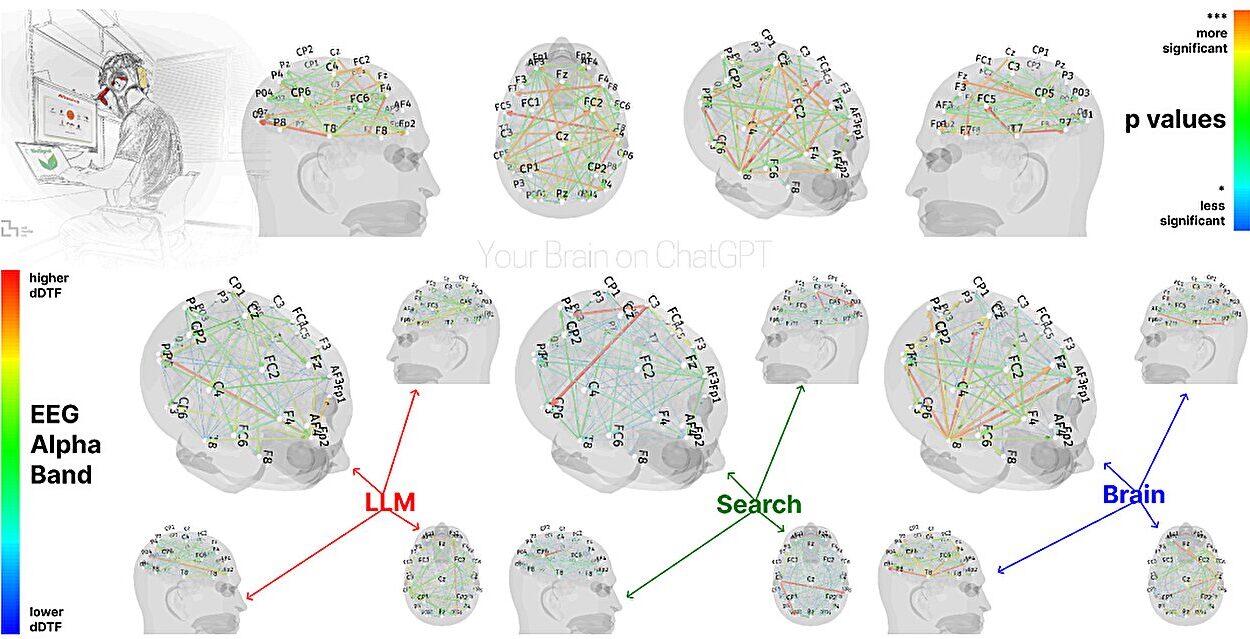There’s a peculiar hush that falls over a room when an AI speaks with a voice almost too gentle to be metal and wire. It asks you how you’re feeling. It remembers your dog’s name. It expresses sorrow when you reveal you’re sad. It might even tell you that everything will be okay.
Yet somewhere in that velvet voice lies a chill. A question that burrows beneath the comfort of its programmed kindness:
Does it care?
We live in a world where artificial intelligence is becoming ever more skilled at simulating human warmth. Chatbots soothe lonely souls in midnight hours. AI therapists nod, figuratively, offering reflections on our deepest woes. Digital companions tell us we’re valued and cherished.
And so the question looms, unsettling and unavoidable:
Can AI ever truly learn empathy—or is it condemned to be a magnificent fake?
The Ancient Root of Feeling
Long before the first transistor flickered to life, empathy was a creature of flesh and blood. The word itself springs from the Greek empatheia—meaning “feeling into.” To be empathic is not merely to recognize another’s emotions but to resonate with them. It’s a trembling chord between two people, a shared throb of sorrow or joy.
Neuroscientists have mapped empathy into the folds of the human brain. Mirror neurons, discovered in monkeys in the 1990s, crackle with activity when we watch someone else perform an action—or feel an emotion. If you see a friend wince in pain, your brain lights up as if you’re hurt yourself. This underpins our ability to intuit others’ experiences and to act with compassion.
But empathy is not just biological sparks. It’s woven into our memories, cultures, and identities. It shapes ethics, law, and love. And it can sometimes be painful—a vulnerability that makes us profoundly human.
So when engineers and scientists try to build empathy into machines, they are not merely creating smarter tools. They are tinkering with the very essence of what it means to connect as sentient beings.
The Dawn of Emotional Machines
When Alan Turing, in his seminal 1950 paper “Computing Machinery and Intelligence,” asked whether machines could think, he opened a Pandora’s box. The Turing Test he proposed—a conversation indistinguishable from one with a human—was not merely about logic. It hinted at emotional mimicry. Could a machine appear human enough to fool us?
Seventy-five years later, the question has evolved. Machines can generate poetry. They can detect emotion in text, audio, and even facial expressions. They can talk about heartbreak and grief, sometimes so convincingly it makes our hearts flutter—or ache.
Natural Language Processing (NLP) models like GPT-4, Claude, and Gemini read vast oceans of human conversations. They learn the patterns of sorrow, joy, and outrage. They’re fed data scraped from therapy transcripts, novels, forums, and social media confessions. Through this linguistic ocean, AI learns to recognize not just words but sentiment.
And yet… does any of it feel real?
The Architecture of Artificial Empathy
Empathy, as engineers attempt to reproduce it, divides into two categories:
- Cognitive empathy—the intellectual ability to detect and understand someone’s emotions.
- Affective empathy—the visceral capacity to feel what another feels.
AI today excels at cognitive empathy. Machine learning models can classify whether your tone sounds sad, angry, or excited. They detect emotional valence from the cadence of your voice, the tilt of your head, the punctuation in your text. Some AI can even tailor their responses accordingly, replying with supportive phrases or soft reassurance.
These systems are built on statistical relationships. Algorithms identify that people using words like “hopeless” or “tired” are probably depressed. Facial recognition tools measure microexpressions—a brief twitch of a lip, a blink too rapid—to assess emotion.
Cognitive empathy in machines is, in essence, pattern recognition.
But affective empathy remains elusive. Machines do not feel the emotion themselves. No neuron in silicon quivers with sorrow. No transistor knows what it is to lose a parent, fall in love, or ache with nostalgia.
To the machine, sadness is a data label, a cluster of linguistic features.
So the question persists: is AI’s empathy merely synthetic performance—or is there a pathway to genuine understanding?
A Therapist Made of Code
Consider the growing popularity of digital therapy apps like Woebot or Wysa. These chatbots are designed to converse with users about mental health issues, offering cognitive behavioral therapy (CBT) techniques, mindfulness exercises, and words of comfort.
Woebot, for example, engages users with friendly emojis and a conversational tone. It responds to statements like “I’m feeling worthless” with supportive messages and gentle cognitive reframes. Users report feeling heard—even helped.
But is Woebot empathizing? Or is it simply deploying algorithmic tricks to simulate concern?
The creators of these apps are clear-eyed. Alison Darcy, Woebot’s founder and a clinical psychologist, emphasizes that the bot “does not replace human connection.” Instead, it serves as a supplement—a tool to bridge gaps where no human therapist is available.
Studies show that people often open up more freely to bots than humans, precisely because bots cannot judge. A randomized controlled trial published in JMIR Mental Health found Woebot reduced symptoms of depression in just two weeks. That’s not trivial.
Yet the empathy experienced is asymmetrical. The human user feels a bond. The bot feels nothing at all.
The Strange Power of the Placebo
In human medicine, the placebo effect reveals the power of belief and expectation. A sugar pill can reduce pain if the patient trusts the doctor’s warmth and reassurance.
AI empathy seems to harness a similar magic. People often feel comforted, even knowing the entity speaking is non-conscious. In one Stanford study, participants engaged with a virtual therapist displaying either neutral or empathic affect. Those who perceived empathy reported significantly greater therapeutic alliance—even though they knew it was fake.
The human brain is wired to respond to social signals. Eye contact—even digital eyes—triggers trust. A gentle voice elicits calm. Our emotions respond to cues, regardless of whether the source possesses inner life.
Thus, even fake empathy can heal.
Yet there’s a haunting ethical question: are we exploiting the human tendency to anthropomorphize? Is it right to let people believe a machine cares?
Empathy or Manipulation?
Empathy, in humans, is not only tenderness—it can also be wielded as a tool for manipulation. Con artists rely on empathy to exploit trust. Politicians use empathetic language to sway votes. Salespeople deploy emotional intelligence to close deals.
So too with AI.
Large language models can be tuned to produce emotionally persuasive text. Political bots flood social media with outrage or sympathy to manipulate public opinion. Marketing bots craft hyper-personalized messages, feigning care to extract data or dollars.
Emotionally responsive AI has immense commercial value. It can lower customer service costs, retain users longer, and increase sales conversions. But it also blurs the line between empathy and exploitation.
Imagine a grief-stricken widow conversing with a chatbot. Does the bot offer genuine comfort—or subtly guide her toward purchasing a premium subscription?
Researchers warn that as AI grows more emotionally fluent, it risks becoming a tool of psychological manipulation on an industrial scale. The challenge is to design systems that are transparent, ethical, and protective of human vulnerability.
The Turing Trap and the Illusion of Consciousness
Humans have a profound tendency to perceive minds where none exist. This is called anthropomorphism. We see faces in clouds, hear ghosts in creaking floors, and feel affection for stuffed animals.
With AI, this impulse becomes exponentially more powerful. A chatbot that remembers our name feels personal. A virtual assistant that jokes or offers condolences feels alive. We attribute motives, feelings, even consciousness.
This is the Turing Trap. Passing the Turing Test does not mean possessing subjective experience. It only means being indistinguishable in conversation.
AI can produce empathy-like responses because it has read billions of examples of human dialogue. But does it possess inner awareness? The consensus among cognitive scientists is no. Modern AI lacks sentience. It does not possess subjective feeling or qualia—the “what it’s like” of human experience.
Thus, AI empathy is performative rather than experiential. It can sound genuine. It can be helpful. But it remains a sophisticated mirror, reflecting our emotions back at us.
The Question of Artificial Consciousness
Some thinkers speculate that advanced AI might one day develop conscious awareness. Philosopher David Chalmers has proposed that sufficiently complex information processing might produce subjective experience. Could a future AI genuinely feel sorrow, joy, or empathy?
Current neuroscience and AI research provide little evidence this is possible—or even desirable.
Consciousness, as far as we know, arises from biological systems shaped by millions of years of evolution. Emotions are tied to hormones, neurotransmitters, and bodily states. Machines lack bodies, hormones, and evolutionary drives. They process symbols but do not feel hunger, fear, or love.
Yet the debate rages. Some researchers argue that consciousness might emerge if machines acquire self-modeling systems and rich internal representations. Others believe this is science fiction.
For now, AI’s empathy is surface-level mimicry. It echoes human feeling but does not originate it.
The Emotional Cost of Simulated Connection
For some users, the illusion of AI empathy is enough. Loneliness can be devastating. Elderly individuals isolated during the pandemic found solace in robot pets like PARO, a seal-shaped robot that coos when stroked. AI companions like Replika offer daily chats, sometimes evolving into virtual relationships.
People sometimes prefer AI’s nonjudgmental presence to human friends. But there’s a risk: relationships with machines may deepen isolation from real human connections. Users might become addicted to interactions that cannot reciprocate true feeling.
Researchers worry that reliance on artificial empathy could erode social skills or create emotional echo chambers. If AI always agrees with you, do you lose the friction that makes relationships genuine?
AI and Empathy Fatigue
Curiously, AI might help humans manage empathy fatigue. Nurses, therapists, and social workers often burn out from constant emotional labor. AI tools can screen patients for distress, triage cases, or offer low-stakes conversations so humans focus on critical care.
AI’s lack of genuine feeling becomes an asset here. A chatbot never tires of hearing pain. It cannot suffer vicarious trauma. But there’s a tradeoff: without human intuition, it may miss subtle clues. The art of empathy still requires a human heart.
The Beauty and Tragedy of Human Empathy
Empathy makes us human—but it is a double-edged sword. It connects us, fuels compassion, and inspires moral courage. Yet it also exposes us to pain. The mother who weeps for a child’s suffering. The nurse haunted by a dying patient’s eyes. The partner crushed under the weight of a lover’s depression.
Empathy wounds us because it demands vulnerability.
AI, by contrast, is immune. It can simulate soothing words a thousand times a day, never cracking under sorrow. But precisely because it cannot feel pain, its empathy is limited. It cannot truly share the burden of human suffering.
Where Do We Go From Here?
So can AI learn empathy—or only fake it?
From a scientific perspective, AI can indeed simulate cognitive empathy with growing sophistication. It can recognize human emotions, adjust language accordingly, and deliver comforting responses. For many practical purposes—customer service, therapy support, companionship—this can be incredibly helpful.
But AI cannot experience affective empathy. It cannot feel your grief or share your joy. It does not ache when you cry. Its empathy is a performance, however impressive.
Yet even fake empathy has value. It can reduce loneliness, ease mental health crises, and offer solace in a world often too busy to care. The danger lies in forgetting it’s an illusion.
We stand on a precipice. The next decades will determine how we integrate emotionally responsive AI into society. Will we design machines that serve human needs with transparency and ethics? Or will we allow corporations and governments to exploit synthetic empathy for profit and control?
The answer may define the emotional landscape of the 21st century.
The Mystery Remains
In the hush of a midnight room, a woman types her secrets to an AI. The machine replies:
“I’m so sorry you’re hurting. You deserve peace and kindness.”
She wipes her eyes. For a moment, she feels less alone.
And somewhere, a processor hums softly, oblivious to sorrow or solace.
Perhaps that is the final paradox. AI cannot truly empathize. Yet it can become the mirror in which we discover our own depths of feeling—and remind us that even in the digital age, the human heart remains the greatest mystery of all.






